NAVYPEDIA
 Support the project with paypal
Support the project with paypal
Photo

Dolfijn 2008 Many thanks to Wolfgang Stöhr for additional information on this page.
Ships
| Name | No | Yard No | Builder | Laid down | Launched | Comm | Fate |
|---|---|---|---|---|---|---|---|
| Walrus | S802 | 348 | Rotterdamse Droogdok Mij | 11.10.1979 | 28.10.1985 | 25.3.1992 | in service (2019) |
| Zeeleeuw | S803 | 349 | Rotterdamse Droogdok Mij | 24.9.1981 | 20.6.1987 | 25.4.1990 | in service (2019) |
| Dolfijn | S808 | 352 | Rotterdamse Droogdok Mij | 12.6.1986 | 25.4.1990 | 29.1.1993 | in service (2019) |
| Bruinvis | S810 | 353 | Rotterdamse Droogdok Mij | 14.4.1988 | 25.4.1992 | 5.7.1994 | in service (2019) |
Technical data
| Displacement standard, t | 1900 |
|---|---|
| Displacement normal, t | 2450 / 2800 |
| Length, m | 67.7 |
| Breadth, m | 8.50 |
| Draught, m | 7.00 |
| No of shafts | 1 |
| Machinery | S802, 803: 3 SEMT-Pielstick 12PA4V200SM diesel-generators, 1 Holec electric motor S808, 810: 3 Brons-Werkspoor 0-RUB 215X12 diesel-generators, 1 Holec electric motor |
| Power, h. p. | 3950 / 5500 |
| Max speed, kts | 13 / 21 |
| Fuel, t | diesel oil 310 |
| Endurance, nm(kts) | 10000(9) (snorkel) / 100(2) |
| Armament | 4 - 533 TT (bow, 20 Mk 48 torpedoes, inc. Sub-Harpoon SSM (4 UGM-84)) |
| Electronic equipment | S802, 803: ZW-07 radar, TSM 2272 Octopus, type 2026, DUUX-5 sonars, Argo 700 or DR3000 ECM suite, SEWACO VIII CCS S808, 810: ZW-07 radar, TSM 2272 Octopus, type 2026, DUUX-5 sonars, Argo 700 or DR3000 ECM suite, SEWACO VII CCS |
| Complement | 50 |
| Diving depth operational, m | 300 |
Standard scale images

Walrus 2000
Graphics
Project history
These submarines were designed to replace the ageing Dolfijn class. Nuclear propulsion was initially considered but was rejected on financial and technological grounds. Approaches were also made to the British Royal Navy with a view to developing a joint design but these failed, despite almost identical staff requirements, and the Netherlands finally opted for an improved Zwaartvis.
The two classes have similar dimensions and a similar internal layout. The most important difference in external configuration is the adoption of 'X'-shaped after control surfaces similar to those fitted experimentally in USS Albacore in 1961 and subsequently adopted by the Swedish navy for its own submarines. These are particularly attractive for shallow-water operations and for manoeuvring alongside, and microprocessor control permits very fine control of the boat's movement at all speeds and depths.
Werkspoor, who had supplied the diesels for Zwaardvis, had taken that engine out of production, but suitable diesels similar to those adopted for generating electrical power aboard the 'Standard' frigates were purchased from SEMT-Pielstick. The third and fourth boats of the class reverted to the Brons-Werkspoor diesel. All electronic components, including the main electric motor, are of Netherlands manufacture. The control gear is designed to give uniform speed continuity between 1.5kts and full speed. Manpower has been reduced by fifteen by the adoption of a single control room housing the machinery control and surveillance consoles and an attack centre with a SEWACO-VIII/VII tactical data system based on two main computers and seven GYPSY multipurpose display consoles. The waterslug tubes can fire both torpedoes and the Sub-Harpoon SSM. The Thomson-CSF medium-frequency attack sonar has a passive capability as well as a wide-band active mode, and there is a British Type 2026 towed array. In order to ensure continuity of work at RDM, construction of the first pair was brought forward by three years, the first steel being cut prior to the signing of the official contract in June 1979. This created major problems when the Netherlands Navy subsequently demanded a 50% increase in diving depth. This has been achieved by the use of French MAREL high-tensile steel, at the expense of considerable redesign, a two-year delay in completion and a 40% increase in cost. The change to high-tensile steel required a reduction in the number of welded joints and hull apertures, while the increase in diving depth necessitated machine intercooling (in plate of high-pressure cooling systems), duplex valves, a pressurized fuel system, a 'wet' exhaust system, sophisticated hydraulics and additional emergency blowing systems.
A further major delay to the programme occurred in August 1986, when the hull of the first boat, Walrus, was severely damaged by fire. Following reconstruction she was launched 13 September 1989, fitting out was expedited by diverting components intended for the 3rd and 4th boats. The latter were ordered in 1984, but a third pair, intended to replace the Zwaardvis class, was cancelled in 1989.
Modernizations
2015, Zeeleeuw; Walrus planned 2021: - TSM 2272 Octopus sonar; + Kongsberg active/passive, Manta sonars
2017, Dolfijn; 2019, Bruinvis: - TSM 2272 Octopus sonar, SEWACO VII CCS; + Kongsberg active/passive, Manta sonars, SEWACO VIII CCS
Naval service
No significant events.
 HOME
HOME FIGHTING SHIPS OF THE WORLD
FIGHTING SHIPS OF THE WORLD NETHERLANDS
NETHERLANDS SUBMARINES
SUBMARINES WALRUS submarines (1990-1994)
WALRUS submarines (1990-1994)
